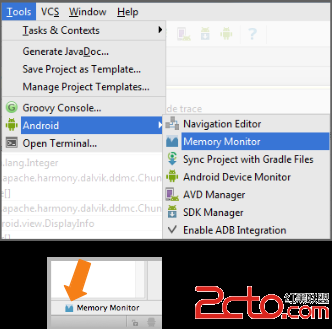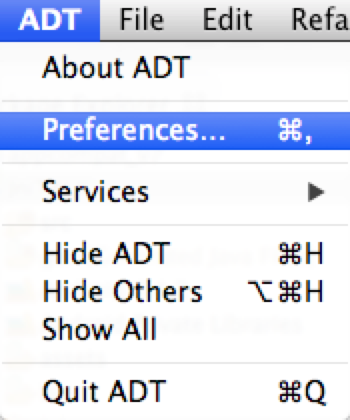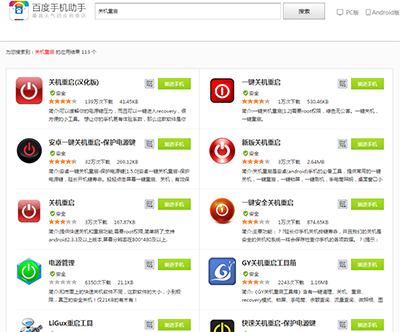編輯:關於Android編程
在之前一段的項目中,使用Java模仿Http Post方式發送參數以及文件,單純的傳遞參數或者文件可以使用URLConnection進行相應的處理。
但是項目中涉及到既要傳遞普通參數,也要傳遞多個文件(不是單純的傳遞XML文件)。在網上尋找之後,發現是使用HttClient來進行響應的操作,起初嘗試多次依然不能傳遞參數和傳遞文件,後來發現時因為當使用HttpClient時,不能使用request.getParameter()對普通參數進行獲取,而要在服務器端使用Upload來進行操作。
HttpClient4.2 jar下載 :http://download.csdn.net/detail/just_szl/4370574
客戶端代碼:
import java.io.ByteArrayOutputStream; import java.io.File; import java.io.IOException; import java.io.InputStream; import org.apache.http.HttpEntity; import org.apache.http.HttpResponse; import org.apache.http.HttpStatus; import org.apache.http.ParseException; import org.apache.http.client.HttpClient; import org.apache.http.client.methods.HttpPost; import org.apache.http.entity.mime.MultipartEntity; import org.apache.http.entity.mime.content.FileBody; import org.apache.http.impl.client.DefaultHttpClient; import org.apache.http.util.EntityUtils; /** * * @author <a href="mailto:[email protected]"> Geray</a> * @version 1.0,2012-6-12 */ public class HttpPostArgumentTest2 { //file1與file2在同一個文件夾下 filepath是該文件夾指定的路徑 public void SubmitPost(String url,String filename1,String filename2, String filepath){ HttpClient httpclient = new DefaultHttpClient(); try { HttpPost httppost = new HttpPost(url); FileBody bin = new FileBody(new File(filepath + File.separator + filename1)); FileBody bin2 = new FileBody(new File(filepath + File.separator + filename2)); StringBody comment = new StringBody(filename1); MultipartEntity reqEntity = new MultipartEntity(); reqEntity.addPart("file1", bin);//file1為請求後台的File upload;屬性 reqEntity.addPart("file2", bin2);//file2為請求後台的File upload;屬性 reqEntity.addPart("filename1", comment);//filename1為請求後台的普通參數;屬性 httppost.setEntity(reqEntity); HttpResponse response = httpclient.execute(httppost); int statusCode = response.getStatusLine().getStatusCode(); if(statusCode == HttpStatus.SC_OK){ System.out.println("服務器正常響應....."); HttpEntity resEntity = response.getEntity(); System.out.println(EntityUtils.toString(resEntity));//httpclient自帶的工具類讀取返回數據 System.out.println(resEntity.getContent()); EntityUtils.consume(resEntity); } } catch (ParseException e) { // TODO Auto-generated catch block e.printStackTrace(); } catch (IOException e) { // TODO Auto-generated catch block e.printStackTrace(); } finally { try { httpclient.getConnectionManager().shutdown(); } catch (Exception ignore) { } } } /** * @param args */ public static void main(String[] args) { // TODO Auto-generated method stub HttpPostArgumentTest2 httpPostArgumentTest2 = new HttpPostArgumentTest2(); httpPostArgumentTest2.SubmitPost("http://127.0.0.1:8080/demo/receiveData.do", "test.xml","test.zip","D://test"); } }
服務端代碼:
public void receiveData(HttpServletRequest request, HttpServletResponse response) throws AppException{
PrintWriter out = null;
response.setContentType("text/html;charset=UTF-8");
Map map = new HashMap();
FileItemFactory factory = new DiskFileItemFactory();
ServletFileUpload upload = new ServletFileUpload(factory);
File directory = null;
List<FileItem> items = new ArrayList();
try {
items = upload.parseRequest(request);
// 得到所有的文件
Iterator<FileItem> it = items.iterator();
while (it.hasNext()) {
FileItem fItem = (FileItem) it.next();
String fName = "";
Object fValue = null;
if (fItem.isFormField()) { // 普通文本框的值
fName = fItem.getFieldName();
// fValue = fItem.getString();
fValue = fItem.getString("UTF-8");
map.put(fName, fValue);
} else { // 獲取上傳文件的值
fName = fItem.getFieldName();
fValue = fItem.getInputStream();
map.put(fName, fValue);
String name = fItem.getName();
if(name != null && !("".equals(name))) {
name = name.substring(name.lastIndexOf(File.separator) + 1);
// String stamp = StringUtils.getFormattedCurrDateNumberString();
String timestamp_Str = TimeUtils.getCurrYearYYYY();
directory = new File("d://test");
directory.mkdirs();
String filePath = ("d://test")+ timestamp_Str+ File.separator + name;
map.put(fName + "FilePath", filePath);
InputStream is = fItem.getInputStream();
FileOutputStream fos = new FileOutputStream(filePath);
byte[] buffer = new byte[1024];
while (is.read(buffer) > 0) {
fos.write(buffer, 0, buffer.length);
}
fos.flush();
fos.close();
map.put(fName + "FileName", name);
}
}
}
} catch (Exception e) {
System.out.println("讀取http請求屬性值出錯!");
// e.printStackTrace();
logger.error("讀取http請求屬性值出錯");
}
// 數據處理
try {
out = response.getWriter();
out.print("{success:true, msg:'接收成功'}");
out.close();
} catch (IOException e) {
e.printStackTrace();
}
}
以上所述是小編給大家介紹的HttpClient通過Post上傳文件的實例代碼,希望對大家有所幫助,如果大家有任何疑問請給我留言,小編會及時回復大家的。在此也非常感謝大家對本站網站的支持!
 Android Developer:Memory Monitor演示
Android Developer:Memory Monitor演示
這個演示展示了在Android Studio中Memory Monitor工具基本的用法和流程。Memory Monitors實時報告了你的app分配的內存。它的優勢:在
 Mac下使用Eclipse實現Android中調用C/C++(NDK)基礎詳細教程
Mac下使用Eclipse實現Android中調用C/C++(NDK)基礎詳細教程
需求NDK是由谷歌娘提供的,某種意義上就是可以讓android使用c開發的第“三”方sdk,所以,正常來說eclipse是沒有配置這個東西的,當然
 Android下的CMD命令之關機重啟及重啟recovery
Android下的CMD命令之關機重啟及重啟recovery
Android剛興起的時候,著實讓一些小眾軟件火了一把,切水果,Tom貓,吹裙子就是其中的代表,當然還有實用性很強的關機重啟軟件,我們去百度上搜索一下。截圖:一.了解CM
 自定義Adapter並通過布局泵LayoutInflater抓取layout模板編輯每一個item實現思路
自定義Adapter並通過布局泵LayoutInflater抓取layout模板編輯每一個item實現思路
寫在前面的話: 看到標題這麼長可能大家有點抓狂了,是的,我在剛剛學這一篇的時候有一些不理解,什麼是布局泵?編輯每一個模板然後什麼是自定義Adapter?下面我們開始學習這